.
1839 Sea Service Brown Bess with Lovell Catch

| OA | 550mm | Bl | 433mm | Sl | 100.5mm | Mrd | 23.5mm | Sm | 50mm | Bw | 30mm |
The Sea Service musket was made up from a mixture of old flintlock parts and new percussion parts, and unlike the P1838, P/39 or P/42 Infantry muskets it was stocked to take a 4" bayonet with Lovell catch.
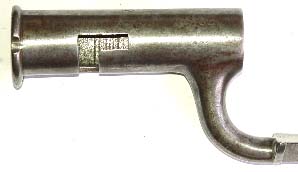
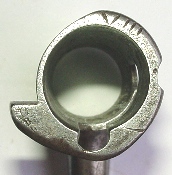
Standard India pattern bayonet converted to Sea service percussion musket, a sight notch and Lovell catch have been added.
Apparently the Sea Service bayonet was also newly made with the stream line new land pattern shoulders[1].

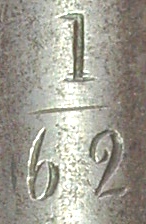

Socket has fraction for 1st company weapon 62.
Blade is marked with maker 'I.Salter', Ordnance inspection mark 'Crown' over '40', 'J.D', 'S' and '114'.

India pattern shoulders.
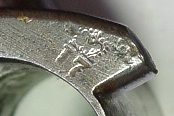
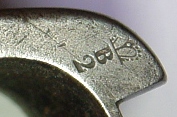
Typical inspection marks found on the Lovell catch conversions. 'Crown' over '17' Enfield inspection, 'Crown' over 'B' over '2', Birmingham inspection.
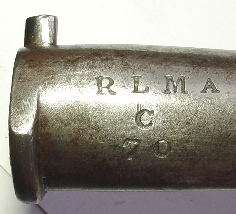
A number of bayonets have been found with regimentals marked to a regiment with the abbreviation 'RLMA', this has been attributed to an unidentified Royal Marine Artillery unit. (I have in my collection a 1842 pattern bayonet with 'RLM' on the socket). However it is possible that 'RLMA' may be Royal Lancashire Militia Artillery [2], this unit was raised officially on the 13th April 1853 and comprised six batteries, 'A' through 'F'. It would seem possible giving the introduction of the P1851 and the impending introduction of the p1853 rifle, that these Sea Service muskets and bayonets were diverted to artillery militia units, especially given the similarity between the Sea Service and the P1841 Artillery bayonet.
(1) British & Commonwealth bayonets by Ian D Skennerton and Robert Richardson, B144, page 105, ISBN 0 949749 04 4
(2) The Militia Artillery 1852-1909 (Their Lineage, Uniforms and Badges) by Norman E. H. Litchfield ISBN 0 9508205 1 2